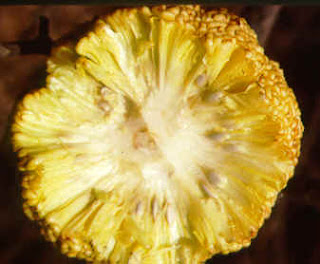Doesn’t the tree at the top of this blog look inviting? I’d love to sit on a branch, lean against the trunk, and read a good book. Well, I would if I didn’t know how many itchy critters crawl around on tree trunks in our area. The photo was taken by my daughter at the Dallas Arboretum. I especially love the picture, as the image looks as if I could step right in and rest in the shade of that giant tree.
Bois D’Arc trees are found all over the contiguous United States. They are also named May Apple and Osage Orange, though maclura pomifera is the scientific name. In our area of North Central Texas, the trees were often cut and used by settlers for fence posts. Some people say the posts often sprouted, hence the fence lines of bois d’arc trees. Other (probably more reliable) accounts say the trees were used as fence rows because the barbs kept the cattle in--or out. According to Jim Mason at the Great Plains Nature Center in Wichita, Kansas, http://www.gpnc.org/, before the invention of barbed wire in the 1880's, many thousands of miles of hedge were constructed by planting young Osage Orange trees closely together in a line. The saplings were aggressively pruned to promote bushy growth. "Horse high, bull strong and hog tight." Those were the criteria for a good hedge made with bois d'arc. Tall enough that a horse would not jump it, stout enough that a bull would not push through it and woven so tightly that even a hog could not find its way through!
After barbed wire made hedge fences obsolete, the trees still found use as a source of unbeatable fence posts. The wood is strong and so dense that it will neither rot nor succumb to the attacks of termites or other insects for decades. The trees also found use as an effective component of windbreaks and shelterbelts.The barbs on the female tree are said to have inspired barbed wire.
 |
| Photo by Jim Mason |
The other name of the tree comes from the Osage tribe, which lived near the home range of the tree, and the aroma of the fruit after it is ripe. Find one of the fruit that has been sitting in the sun on a balmy Indian Summer day and notice the pleasant, orange-peel smell of the skin. Not all of the trees will have fruit because Osage Orange are either male or female, and only the females will bear fruit.
 |
| All the slice needs is baking, a glob for the birdseed, a stem, and a coat of clear polyester spray. Photo by Jim Mason |
One day, I noticed a few seeds on the lamp table and cleaned them up. The next day, there were more. Then, I caught a tiny mouse feasting on the seeds in the center of each flower. I opened the door nearby and shooed the mouse out. That pretty much ended my fascination with bois d’arc crafts, but I think I still have a few of the flowers in a plastic bag somewhere. The policy at our house is to save everything. Literally. Except mice!
Early French explorers named the tree "bois d'arc," meaning "wood of the arc," because its younger branches were used for making strong and resilient bows. In fact, a French trading post established in the mountains of Arkansas and Missouri in the 1700's was named "Aux Arc," after the abundant bois d'arc trees in the area. The English name "Ozark" is probably a corruption of the French "Aux Arc," according to Dan Phillips on his website http://www.pheonizcommotions.com/. In East Texas the pronunciation is pronounced "bodark."
Commerce, in East Texas, has an annual Bois D’ Arc Bash street festival as homage to this remarkable tree. And that city is the ideal location for the celebration, since “Big Max” is Commerce’s record-holding bois d’arc tree. Professor Emeritus of Texas A and M University at Commerce, Dr. Fred Tarpley, admires the bois d’arc so much he has written a book titled WOOD ETERNAL.
On September 7, I'm double dipping as a guest. I have a guest post on Paty Jager's blog at http://patyjager.blogspot.com/ and on Morgen Bailey's blog at http://morgenbailey.wordpress.com/ Please drop by and leave a comment so I won't be lonely.
 |
| Heartfelt thanks! |



3 comments:
Caroline, may we all be as strong & healthy in life & our writing endeavors as that tree of yours :)
I know that Osage Orange are not always considered beautiful, but I think they are special. Hubby cut fence posts on his family farm as a child from hedge. Last year from the family trees he made me several Osage Orange shawl pins. As the wood ages, it yellows to a nice sheen. Enjoyed this post.
The heartwood of the tree is actually orange. It gets darker as it oxidizes. The wood is hard to work, but makes good handles for tools because of its density. However, the trees spread and can rapidly become weeds if not checked by pruning. One tree becomes a forest of thorns in a couple of years.
Post a Comment